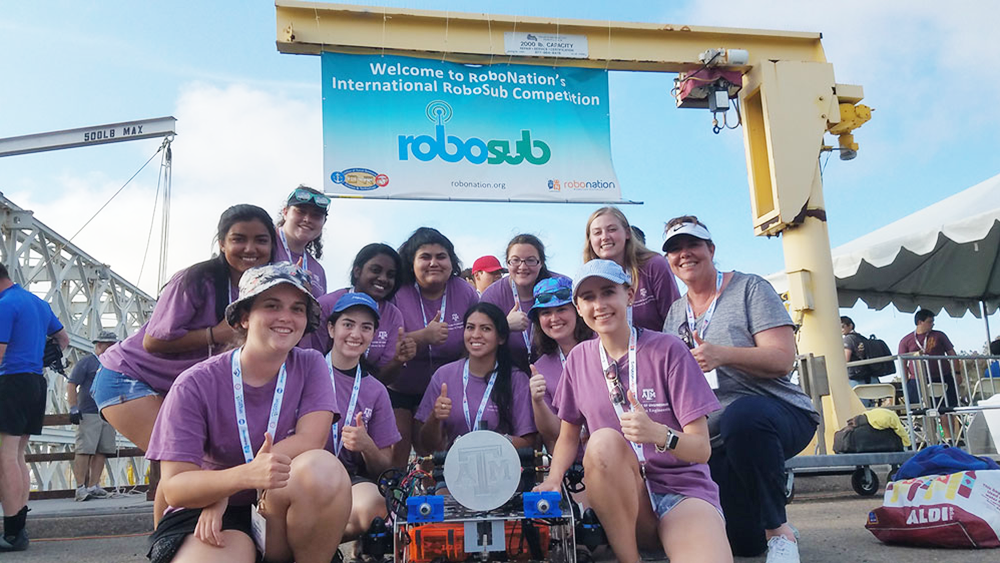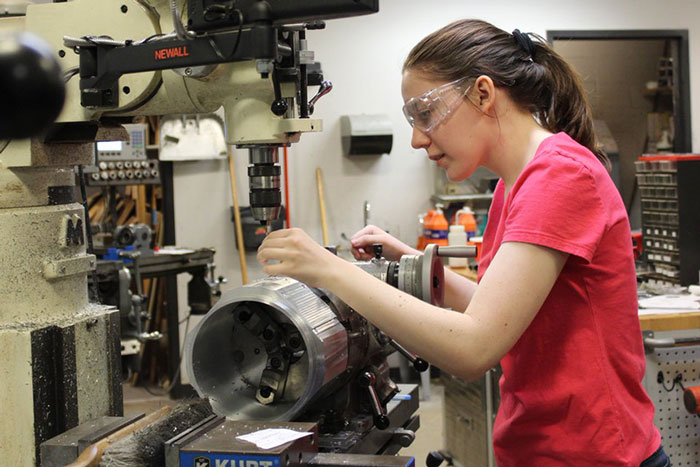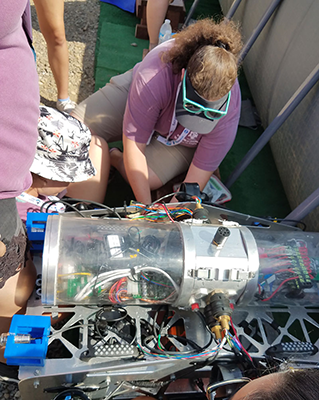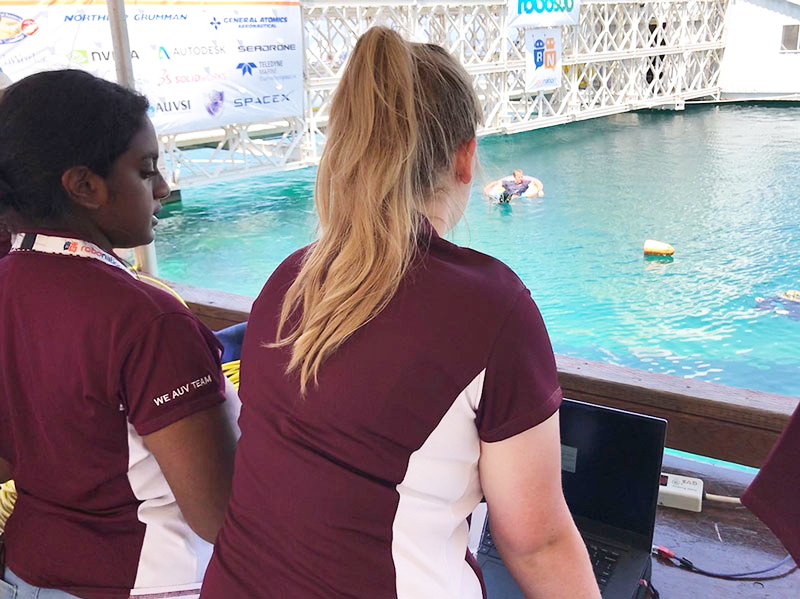
A team of 11 Texas A&M University women engineering students recently competed and qualified in the semifinals at the 2018 International Association for Unmanned Vehicle Systems International (AUVSI) RoboSub competition in San Diego, California. The team was one of 27 that qualified from the original 47 international teams. They also received an award for “Best Knowledge Transfer” for sharing information they learned to benefit other teams and another for mentorship, recognizing efforts in outreach to encourage other young women to pursue robotics.
Northrop Grumman Corporation also awarded the team 10 internship opportunities for next summer. This was the first year that the company was awarding internships to university students that participated in AUVSI. Northrop Grumman representatives took an interest in the team after attending their static judging and technical presentation.

“These students are impressive,” said Shawna Fletcher, director of the Women in Engineering (WE) program. “They’re working on real-world concepts that professional engineers struggle with on a daily basis. They’re doing it on their own time for fun and that is why industry is taking notice.”
The team has competed for the past three years and each time the autonomous underwater vehicle (AUV) is redesigned and improved upon. Past experiences and new ideas are called upon and combined together to construct a better robot than the year before. Each year, a new design leads to lessons learned in the field of underwater vehicles. Those lessons lead to a better build and a more robust and stable vehicle.
“It was a huge relief to qualify,” said Kaitlin Frierson, senior electronic systems engineering technology major. “I know the whole team has worked tirelessly to get the AUV ready for competition, but it never gets old to hear a bunch of Aggies ‘whoop!’ after a well-earned victory. We have a reputation at the competition for being heard across the complex when we qualify.”

In partnership with the Engineering Design Center, the team works to build the AUV designed to autonomously navigate through a series of tasks that mimic ongoing research in autonomous underwater systems. Along the road of building this competitive robot, students gain more than technical skills.
“I wanted a way to challenge myself and grow my skills outside of a traditional lecture setting,” said Frierson. “After the first year, I found myself in not only a leadership role, but a mentorship role as well. It has been so fulfilling to help others develop their skills and confidence.”
The WE Robotic Engineering Aggie Females, is a student-lead project team from Texas A&M, sponsored by the Women in Engineering program. The team was divided into three sub-teams, programming, electrical and mechanical, and gives students the opportunity to apply their knowledge from the classroom to real-world scenarios.

Even after spending a year designing and building the vehicle, competition day may not be smooth sailing. Long days are spent at the competition preparing for each test run. The team weathers through sleepless nights, working to solve the latest mystery of nonperfect performance. Dedication is an understatement when it comes to describing the members getting through those final weeks.
“Sometimes it's loose wires, a leaky vehicle or thrusters that aren't working,” said Brenda Lopez, team captain and senior manufacturing and mechanical engineering technology major. “Whatever it is, it has to be figured out before day five [of the competition]. Once the vehicle is finally working the way it’s supposed to and goes through that qualifying gate, it makes all of the time and energy put into this vehicle, and all of those sleepless nights, worth it.”
Whether it’s moving forward after a design setback, or kicking back at the competition and having a Disney sing-a-long, the team agrees the lessons learned were worth the time spent working together.
“WE supports three competition technical project teams year-round, with help from the Engineering Design Center,” said Fletcher. “The ultimate goal is to give students an opportunity to participate in technical projects and build confidence through understanding what it takes to build a working vehicle from start to finish. These students can be proud of their performance as well as how they have grown as a team, and as engineers.”